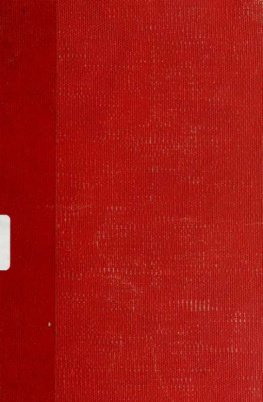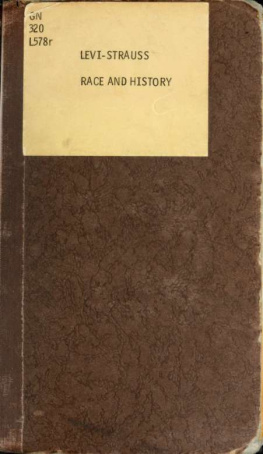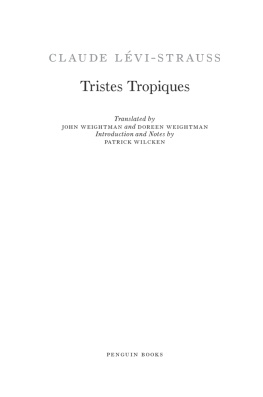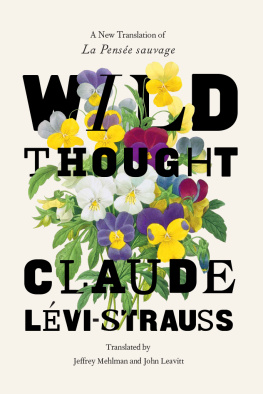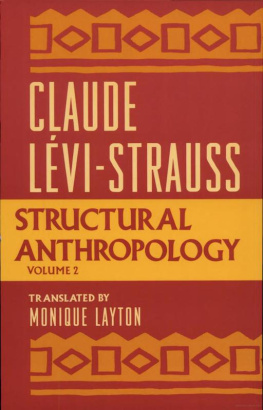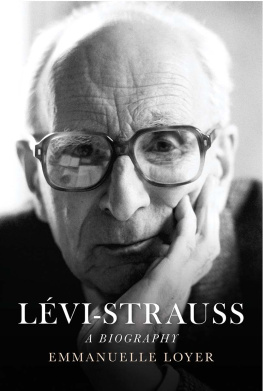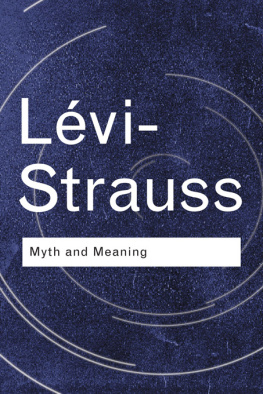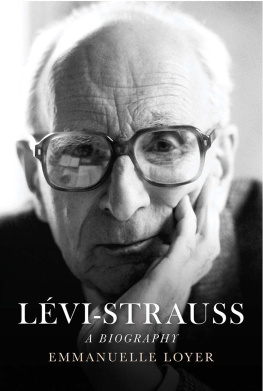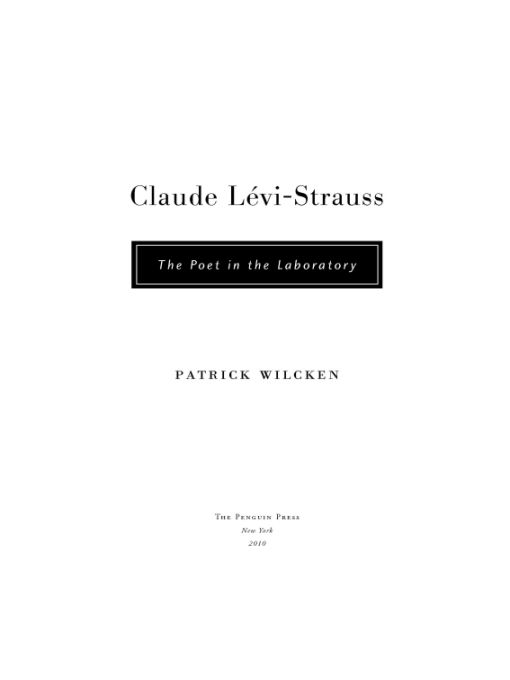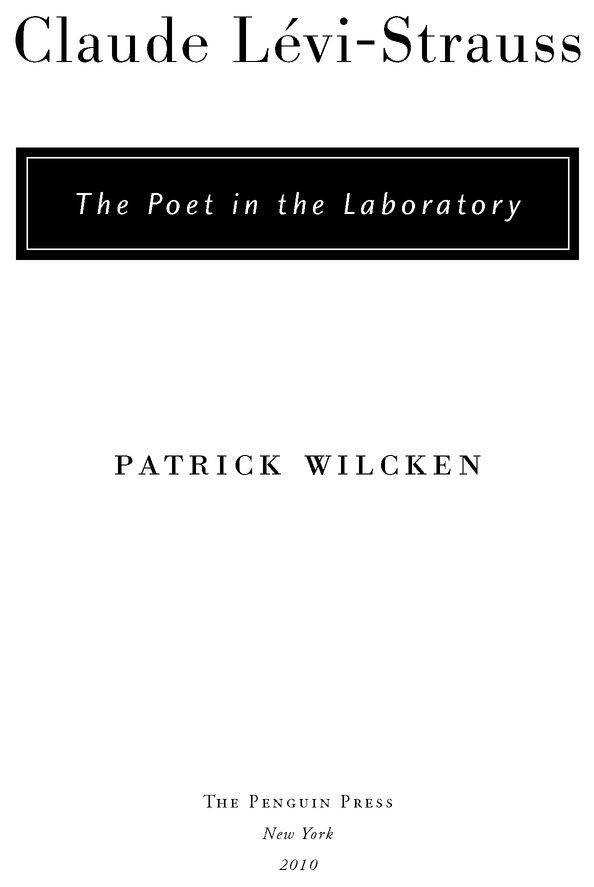Table of Contents
ALSO BY PATRICK WILCKEN
Empire Adrift: The Portuguese Court in Rio de Janeiro 1808-21
For Andreia and Sophia
Introduction
Some people might ask whether I havent been guided by a kind of quixotism throughout my career... an obsessive desire to find the past behind the present. If perchance someone some day were to care to understand my personality, I offer him that key.
CLAUDE LVI-STRAUSS
IN 1938, on the eve of his thirtieth birthday, Claude Lvi-Strauss was in Brazil, leading a mule train along the remains of a telegraph line. Its lopsided poles, rusted wires and porcelain adapters were strung out across the rugged scrublands of northwestern Mato Grosso state, on the fringes of the Amazon Basin. Bearded and sunburned, dressed in soiled dungarees, a colonial-style sun hat and high leather boots, Lvi-Strauss was heading an ethnographic expedition to study the Nambikwaraa loose designation for the nomadic groups who roamed the plateau, naked but for nose feathers, bracelets and waistbands. Farther up the line, as scrub turned to jungle and the team switched to canoes, Lvi-Strauss encountered other tribes encamped in rain-forest clearingsthe survivors of the Arawak, Carib and Tupi cultures. He worked alongside a team of experts, including his first wife, Dina, the tropical-medicine specialist Dr. Jean Vellard, and a Brazilian anthropologist, Luiz de Castro Faria, on a mission that has become as celebrated as it is controversial.
Photographs from Lvi-Strausss fieldwork look dated even for their era. Pack animals heaving crates of equipment through the wilderness, men in pith helmets mingling with virtually naked tribesmen, the exchanging of beads and lengths of cloth for bows, arrows and ritual objects, laden-down canoes and jungle campsites. The skinned carcass of a seven-meter boa constrictor stretches out across one plate, a dozen snake fetuses, its stillborn progeny, spilled out over the earth. It took a lot of shooting, Lvi-Strauss recalled, since these animals are impervious to body wounds and have to be hit in the head. It all has the feel of some grand nineteenth-century scientific expedition.
The effect is doubly disjointed. Following the Polish anthropologist Bronislaw Malinowskis famous fieldwork in the Trobriand Islands off the coast of New Guinea, where he had studied ritual exchange across the archipelago, ethnography had already become strongly associated with solitary cultural immersion. By the 1930s, images from the field were more likely to show a single tent pitched within striking distance of a tribe, a trestle table strewn with notebooks, a rucksack with provisions, possibly some recording equipment stuffed into a satchel. The anthropologists lonely vigil was expected to yield worthwhile results only after years of assimilation. In contrast, Lvi-Strausss team clocked up more than a thousand kilometers, rarely pausing for more than a few weeks in any one place. His expedition would end up being one of the last ventures of its kindan antiquated journey across a forgotten corner of Brazil.
Toward the end of 1938 the party broke up, Castro Faria traveling down the Amazon for Rio de Janeiro, Vellard and Lvi-Strauss taking a small steamship up the Madeira River, then boarding an amphibious plane for Cochabamba in Bolivia.
Added to a brief, earlier spell of fieldwork among the Caduveo and the Bororo farther to the south, the trip had initiated Lvi-Strauss as an anthropologist, but in a peculiarly diffuse way. Instead of the in-depth analysis of a single group, Lvi-Strauss had briefly surveyed half a dozen different indigenous cultures, dotted across the Brazilian interior. That this should have been the starting point for his career was perhaps appropriate. From the fragmentsan arabesque painted on a weathered Caduveo cheek, the Munds igloo-shaped forest huts, the ritual flute songs of the NambikwaraLvi-Strauss built a body of work that reflected not so much the intricacies of a single tribe, but features common to all culture.
The great irony was that his nineteenth-century-style expedition ended up being the handmaiden to one of the most avant-garde bodies of work in the humanities. In his memoir recounting the journey, Tristes Tropiques (1955), written a decade and a half after his experiences in Brazil, Lvi-Strauss put the then emerging discipline of anthropology on the map. From the scraps of his field notes, he pieced together a self-portrait of the anthropologist at midcentury: a cerebral pioneer on a quest to leave the confines of Western culture in order to know another world, another way of being; an outsider condemned to roam the cultural borderlands, forever restless, damaged (psychologiquement mutil) by chronic feelings of rootless-ness; a forlorn traveler surveying the cultural ruins at the edge of European expansion. At the same time, he wrote of a new theoretical approach. The motley groups of Nambikwara, loitering around derelict telegraph stations, scrounging trinkets and leftovers from missionaries, the barely sustainable forest settlements, the heat, the dustall this somehow crystallized into a highly stylized image of indigenous culture. The model was called structuralisman approach that sought to uncover the hidden symmetries that underlay all culture. In Tristes Tropiques Lvi-Strauss captivated readers with early sketches of this method, in the process giving an unexpected coherence to the apparent confusion of indigenous ideas and practices.
ON THE WHOLE, and all things considered, the interview is a detestable genre, Lvi-Strauss once said in an interview, to which the intellectual poverty of the age obliges one to submit more often than one would like. Yet as his fame grew with the success of Tristes Tropiques and the subsequent march of structuralism, he spoke regularly to journalists and academic colleagues. In the 1960s and 70s he often appeared on French television, participated in a series of documentaries and, after his retirement, gave the writer and philosopher Didier Eribon extraordinary access, resulting in a book-length interview, published as De prs et de loin in 1988.
The more one reads, though, the less one seems to be able to grasp the person behind the words and images. In print and on film Lvi-Strauss was at once forthcoming and elusive. Over the years he produced many details, but little substance. One is left with the impression of strong surface imagerya vividness without depth. His anonymous Semitic features (he came from a Jewish family, originally from the Alsace) have been endlessly photographed in the same noncommittal pose. The images that have been stagedLvi-Strauss standing in front of banks of metal card-reference drawers in a Paris archive, for instance, or in a jacket with a parrot perched on his shoulderseem out of character, as if Lvi-Strauss was resistant to the crafts of publicity. In 1970, Vogue photographer Irving Penn posed Lvi-Strauss sunken into an overcoat, his head enveloped by artfully turned-up lapels, his glasses perched on his forehead, the left side of his face disappearing into the shadows. Compared to Penns identically posed portrait of Picassowhose one visible eye, unmoored from the rest of the face, fixes the viewer with a piercing stareLvi-Strausss expression is difficult to read. Not even the manufactured intimacy of celebrity photography, with someone as talented as Penn behind the lens, could offer a glimpse of his inner being.


